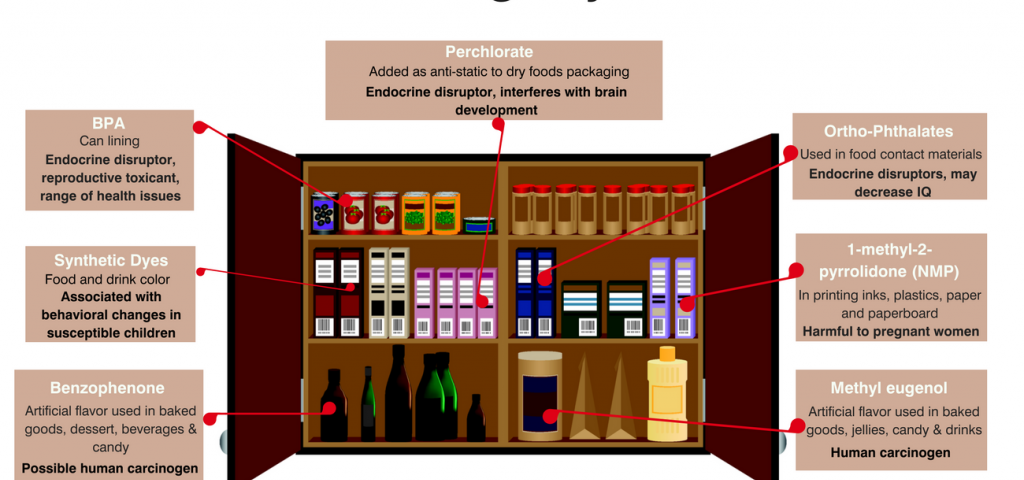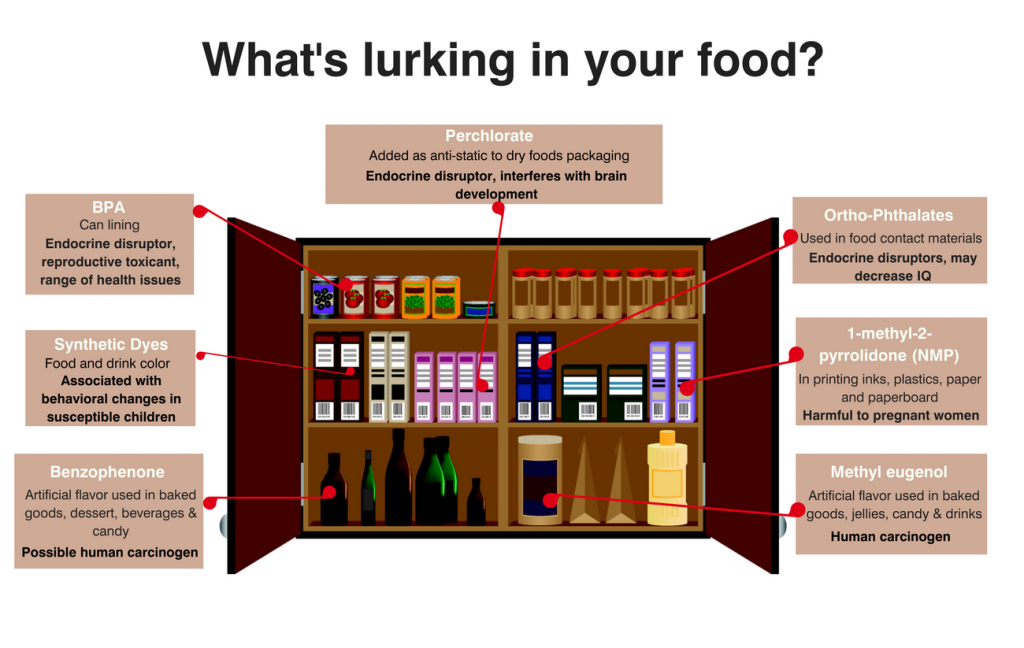While picking up groceries for the week, a shopper may compare brands, prices, and nutritional information to ensure they make economical and healthy choices for their family. Unfortunately, there’s much more to our food than meets the eye – or makes the label.
Approximately 10,000 food additives are allowed in our food. Food additives are substances used to flavor, color, preserve, package, process, and store our food. While some of the chemicals added to food or used in packaging are harmless, others are downright dangerous and linked to health concerns. Certain additives are linked to reproductive problems, developmental issues, and even cancer.
Perchlorate was approved in 2005 as a component of plastic packaging for dry food despite the fact that it is a known endocrine disruptor that impairs infant brain development. Benzophenone – an artificial flavor added to baked goods, dessert, beverages, and candy – is classified as a possible human carcinogen. The list goes on. No matter where you shop, your family’s health may be at risk.
Check out the cupboard below to see what else could be lurking in your food.
How did we get here?
The Food Additives Amendment of 1958 was intended to better protect the public by giving the Food and Drug Administration (FDA) the authority to regulate food additives. Unfortunately, the flawed, 59-year old law, coupled with weak enforcement, has allowed thousands of chemicals to be added to food with little oversight and limited safety information.
Moreover, the law exempts ingredients “Generally Recognized As Safe” (GRAS) from formal FDA review and approval. Originally intended for common ingredients like vinegar and olive oil, industry now abuses the loophole by bypassing FDA review and making safety determinations without oversight. FDA has never reviewed an estimated 1,000 GRAS substances for safety. And many of the 10,000 additives allowed in our food today were authorized by the FDA or industry decades ago.
This broken system leaves both FDA and consumers in the dark. Under the 1958 law, FDA has no way to know what chemicals are actually being used in which food or in what quantities—even in baby food.
How can we make food safer?
The food regulatory system does not ensure the safety of our food. To fix our broken food system, we must:
- End secrecy: Companies should no longer be permitted to decide the safety of their own ingredients without FDA’s review or the public’s knowledge. Congress needs to create a more streamlined, public process for FDA to make decisions and encourage safer innovation.
- Update the science: When FDA reviews chemicals in our food, it makes our food supply safer. But the agency needs to update its guidance to industry to use modern scientific methods to better protect us.
- Ensure existing chemicals are safe: Thousands of chemicals were approved by FDA decades ago, when we had far less understanding about their impacts on human health. FDA needs to reassess their safety. Congress needs to provide FDA with the tools so the agency can get the information it needs to set priorities and make decisions about the 10,000 chemicals in our food.
Ultimately, to solve the problems in the food system and protect public health, industry should not wait for action by FDA or Congress. Companies should lead on removing the worst chemicals of concern and ensure that FDA reviews all chemicals used for safety.
Consumers are increasingly concerned about chemicals in food. It is long past time for the food regulatory system to do its job and ensure the safety of all the food we give to our families.
By Tom Neltner
Tom Neltner, J.D., is Chemicals Policy Director
Enviroshop is maintained by dedicated NetSys Interactive Inc. owners & employees who generously contribute their time to maintenance & editing, web design, custom programming, & website hosting for Enviroshop.

